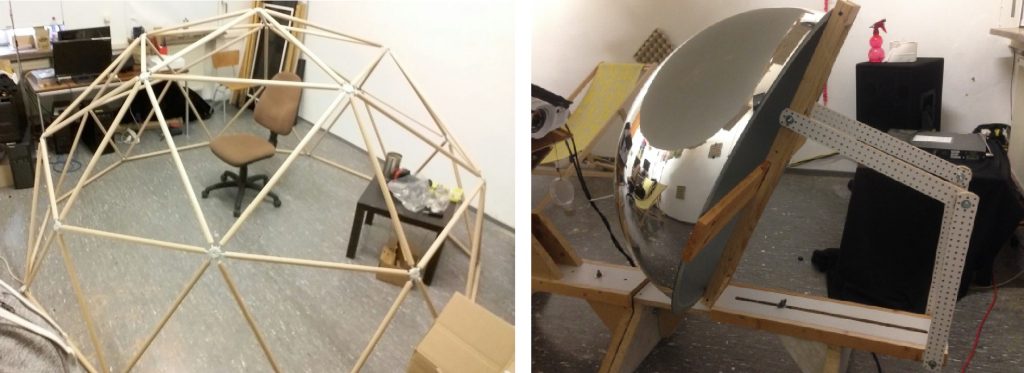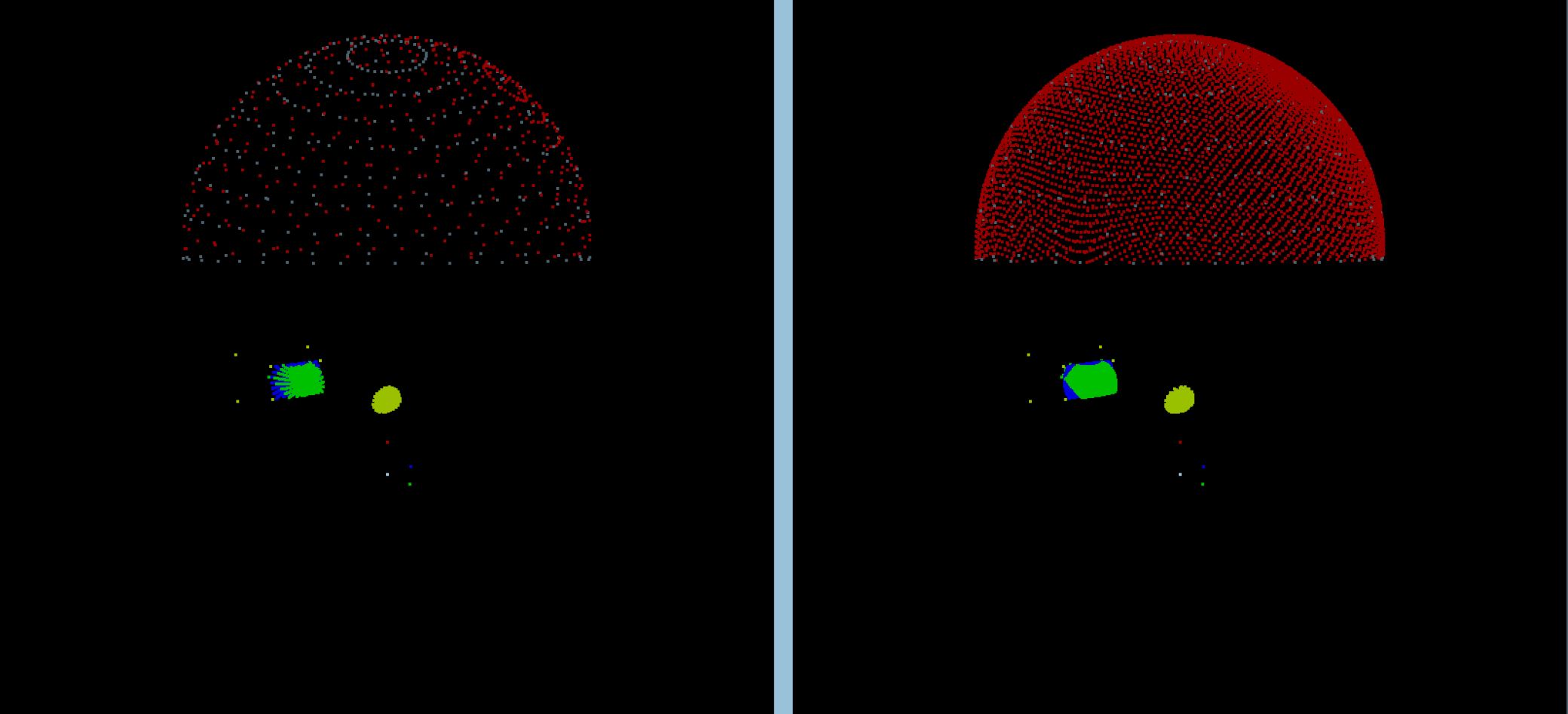During our master’s studies, my friend Hagen and I worked on a semester project called Play in My Dome. Our goal was to make a multiplayer game playable inside a full-dome projection setup—a dome environment built by students in a previous project at Bauhaus University Weimar. Dome projections offer a unique, immersive viewing experience, surrounding the viewer with a spherical visual field. However, unlike head-mounted displays, domes pose different challenges when it comes to spatial distortion and projection. We were excited by the idea of using this space not just for passive video playback, but for interactive gameplay, bringing a new level of engagement to dome environments.

To make this possible, we developed a tool called glWarp, which could warp real-time graphical content onto the curved surface of the dome via a spherical mirror. A major technical hurdle was that typical games render to a flat screen, which would appear heavily distorted when projected onto the dome through a mirror. Our tool captured the original game output and pre-distorted it in real time, using a simulation-based approach to generate a warping mesh. This mesh ensured that the content appeared correct when reflected through the mirror and projected onto the dome. In addition to warping, we also developed an editor and viewer system that allowed us to tweak the mesh and interactively test visual quality inside the dome.
Looking back, this project taught us a great deal—not only about computer graphics and projection technology, but also about problem solving in physical and digital hybrid spaces. It was rewarding to take a technical limitation and turn it into a creative challenge, eventually building a system that worked and could be extended further. The experience also sparked ideas for how dome spaces could be used beyond traditional media playback, including collaborative or educational games. Play in My Dome was both a technical deep dive and a playful exploration of alternative immersive formats.

